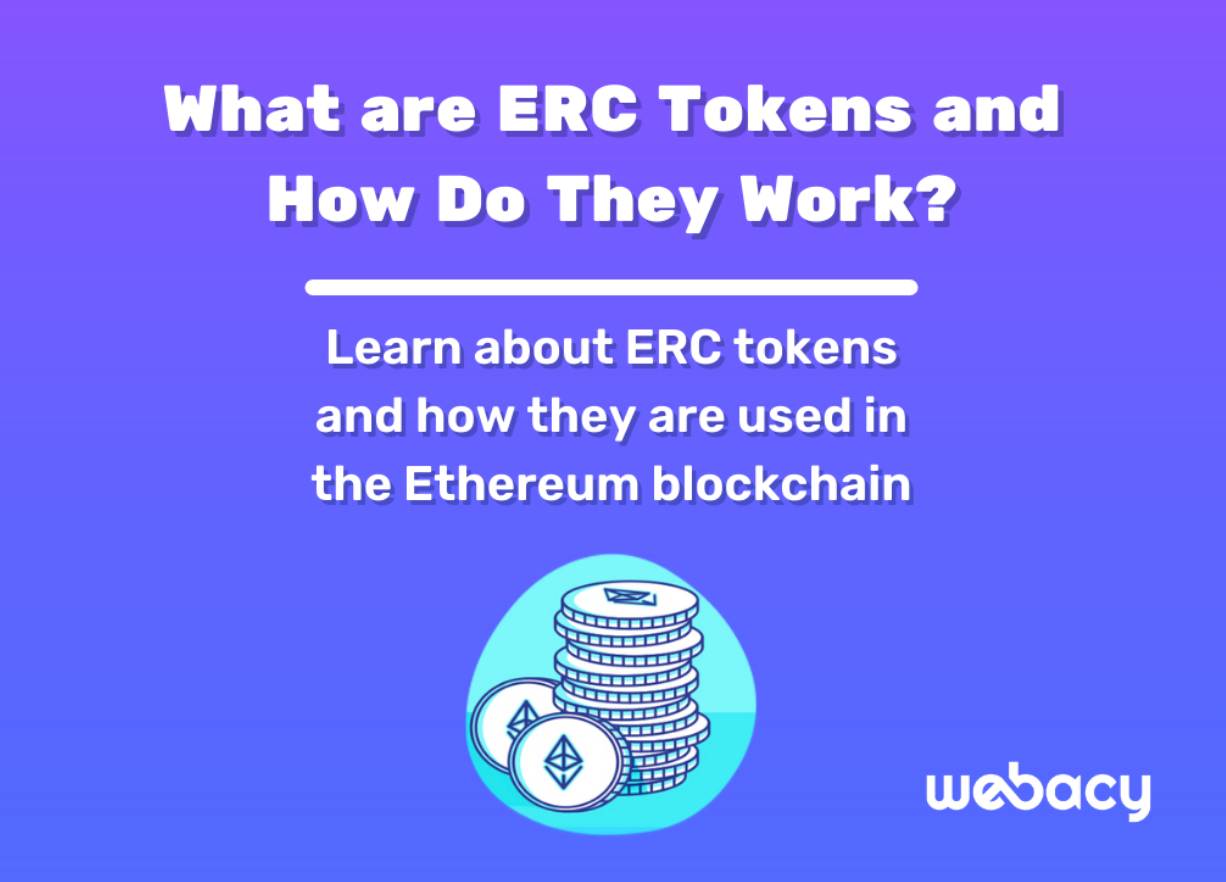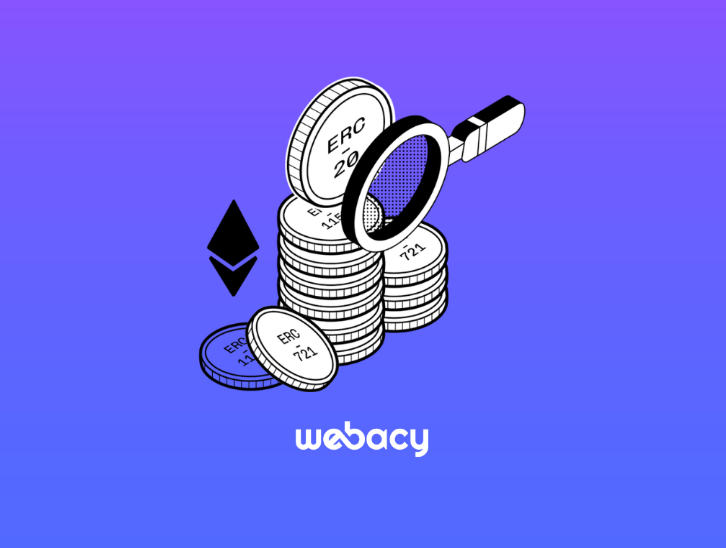What are ERC Tokens and How Do They Work?
Learn about ERC tokens and how they are used in the Ethereum blockchain. This article explains the basics of ERC tokens and their role in the ecosystem. Discover the advantages of using ERC tokens and why they have become so popular.

ERC tokens are an essential component of the Ethereum blockchain ecosystem. These tokens are based on a standard called the Ethereum Request for Comments (ERC), which is used to define the rules for creating new tokens on the Ethereum network. ERC tokens have become increasingly popular over the years, as they enable a wide range of applications, from fungible tokens such as cryptocurrencies to non-fungible tokens such as digital art and collectibles.
In this article, we'll provide a comprehensive guide to ERC tokens, including how they work, the benefits they offer, and the security implications of using them. We'll also answer some of the most common questions about ERC tokens, such as how many ERC tokens exist, which wallets support ERC tokens, and whether ERC-20 is only for Ethereum.
What are ERC Tokens?
ERC tokens are often compared to other token standards, such as Bitcoin's Simple Ledger Protocol (SLP) and the Omni Protocol, but they have some distinct advantages. One of the main benefits of ERC tokens is that they are incredibly customizable, meaning that they can be programmed to suit a wide variety of use cases.
There are several types of ERC tokens, including ERC-20, ERC-721, and ERC-1155. Each type has its own specific purpose and features. ERC-20 tokens are the most common type and are used for transactions and payments. ERC-721 tokens are used for non-fungible assets such as collectibles, while ERC-1155 tokens can represent both fungible and non-fungible assets (NFTs). There are thousands of ERC tokens in existence, with many new ones being created every day.

Understanding ERC-20
ERC-20 is one of the most popular token standards in the Ethereum ecosystem. It was introduced in 2015 and has become the foundation for most of the tokens created on the Ethereum blockchain.
The ERC-20 standard outlines a set of rules and functions that Ethereum-based tokens must follow to be considered ERC-20 compliant. These include basic functions like the transfer of tokens from one wallet to another, getting the total supply of tokens, getting the balance of a specific wallet, and more.
One of the major benefits of ERC-20 tokens is their interoperability with other Ethereum-based applications, such as decentralized exchanges (DEXs), wallets, and other dApps. This means that tokens built on the ERC-20 standard can be used and traded on any Ethereum-based platform that supports the standard.
However, there are also some limitations to the ERC-20 standard. For example, it can be expensive and time-consuming to deploy smart contracts that are used to create ERC-20 tokens due to the requirement for code auditing and the high gas fees associated with interacting with the Ethereum network. Additionally, the ERC-20 standard does not natively support the creation of non-fungible tokens (NFTs).
Despite these limitations, ERC-20 tokens remain one of the most widely adopted token standards in the Ethereum ecosystem. Some of the most popular ERC-20 tokens include Tether (USDT), Binance Coin (BNB), Chainlink (LINK), and Uniswap (UNI). Each token has its own unique features and use cases, making them attractive to different types of investors and users.
ERC Token Security
ERC tokens are digital assets that represent various types of real-world and virtual items, including cryptocurrencies, utility tokens, non-fungible tokens (NFTs), and other assets. Like any digital asset, ERC tokens require secure storage and management to avoid the risk of loss or theft.
Overview of ERC Token Security Considerations
ERC tokens are secured by cryptography and are managed through digital wallets. Therefore, the security of an ERC token is only as good as the security of the wallet it is stored in.
There are several factors to consider when it comes to the security of an ERC token, including:
- Access control: ERC tokens are secured by private keys, which should only be known to the owner of the tokens. Anyone who has access to the private keys can access the tokens, so it's essential to keep them safe and secure.
- Phishing attacks: Hackers may try to trick users into revealing their private keys by sending phishing emails or creating fake websites that look like legitimate wallet providers.
- Malware: Malicious software can infect a computer or mobile device and steal private keys, compromising the security of the ERC tokens stored in the wallet.
- Centralized exchanges: ERC tokens stored on centralized exchanges are vulnerable to the security practices of those exchanges, and thus the risk of hacking and theft are higher than those stored in personal wallets with a solid security strategy.
Best Practices for Securing ERC Tokens
To ensure the security of ERC tokens, it's crucial to follow best practices for securing digital assets, including:
- Use a hardware wallet: A hardware wallet is a physical device that stores private keys offline, making them more secure than software wallets.
- Use a strong password: A strong password makes it difficult for hackers to gain access to the wallet. It's recommended to use a combination of uppercase and lowercase letters, numbers, and special characters.
- Enable two-factor authentication (2FA): 2FA provides an additional layer of security by requiring a second authentication method, such as a text message or biometric authentication, to access the wallet.
- Use a reputable wallet provider: Choose a wallet provider with a good reputation and a history of strong security practices.
- Backup your wallet: Backup your wallet regularly to avoid losing your ERC tokens in case of device failure or loss. You can use manual methods like making sure your seed phrase is stored somewhere in an analog environment, or use a smart contract protection model like Webacy.com.
- Avoid sharing private keys: Never share your private keys with anyone, and never enter them into a website or app.
Examples of ERC Token Hacks and How to Avoid Them
There have been several high-profile hacks of ERC tokens, including the 2017 Parity wallet hack, which resulted in the loss of over $30 million in ETH. The hack was caused by a vulnerability in the Parity wallet software, which allowed hackers to gain access to the private keys of the wallet.
To avoid such incidents, it's essential to keep your wallet software up to date, use a hardware wallet, and follow the best practices mentioned above. Additionally, it's recommended to store ERC tokens on decentralized exchanges or use a decentralized finance (DeFi) platform for trading, as they are generally more secure than centralized exchanges.

Wallets and ERC Tokens
In order to store, send, or receive ERC tokens, you'll need a wallet that supports them. There are a variety of wallet options available, each with their own benefits and limitations.
Wallets that support ERC tokens
There are a number of wallets that support ERC tokens, including both hardware and software wallets.
Some popular options include:
Comparison of different wallet types for ERC token storage
- Hardware wallets are generally considered the most secure option for storing ERC tokens. They are physical devices that store your private keys offline, making it difficult for hackers to access your funds. However, they can be more difficult to use and may not be as convenient for frequent transactions.
- Software wallets, such as MetaMask and Omni Wallet, are typically easier to use and more convenient for frequent transactions. However, they may not be as secure as hardware wallets and can be vulnerable to hacking attacks.
- Web wallets, such as TrustWallet, are similar to software wallets but run entirely in your browser. While they are more convenient than other options, they can also be more vulnerable to hacking attacks.
Benefits and limitations of using wallets for ERC tokens
Using a wallet to store ERC tokens can provide a number of benefits, including increased security and easier access to your tokens. However, there are also some limitations to consider, such as the potential for hacking attacks and the need to pay gas fees for transactions.
Overall, the best wallet for storing your ERC tokens will depend on your specific needs and preferences. It's important to research and compare different wallet options before making a decision.
ERC Tokens in DeFi
ERC tokens are a fundamental building block of the decentralized finance (DeFi) ecosystem. DeFi applications are built on the Ethereum blockchain, and the vast majority of DeFi tokens are ERC tokens. These tokens are used in a variety of ways within DeFi, such as providing liquidity to decentralized exchanges (DEXs), collateralizing loans, and earning interest on deposited funds.
Popular DeFi platforms that use ERC tokens include Uniswap, Aave, Compound, and MakerDAO. These platforms allow users to interact with the DeFi ecosystem in a variety of ways, such as swapping tokens, borrowing and lending funds, and earning interest on deposited assets.
One of the key benefits of using ERC tokens in DeFi is their interoperability. Since the vast majority of DeFi applications are built on the Ethereum blockchain, ERC tokens can be easily transferred between different DeFi platforms, enabling users to take advantage of different DeFi services and opportunities.
However, there are also limitations to using ERC tokens in DeFi. One of the biggest challenges facing DeFi is scalability, as the current state of the Ethereum network can lead to slow transaction times and high gas fees. This can make it difficult and expensive for users to interact with DeFi platforms and ERC tokens.
NFTs and ERC Tokens
NFTs, or non-fungible tokens, have become increasingly popular in recent years as a way to represent unique digital assets on the blockchain. ERC-721 and ERC-1155 are two of the most popular ERC token standards used for creating NFTs. The ERC-721 standard is specifically designed for creating unique tokens, while ERC-1155 allows for the creation of both unique and fungible tokens.
NFTs have a wide range of use cases, from digital art and collectibles to in-game assets and real estate. Many popular NFT marketplaces, such as OpenSea, Blur, and Rarible, are built on top of the Ethereum blockchain and use ERC tokens for their NFTs.
Using ERC tokens for NFTs provides several benefits, such as increased security and transparency, as well as the ability to easily transfer ownership and track provenance. However, there are also some limitations to consider, such as high gas fees and scalability issues during times of high network activity.
Scalability and gas fees for ERC tokens
Scalability is one of the main challenges that ERC tokens face. As the Ethereum network grows in popularity and usage, the limitations of its current infrastructure become more apparent. In order to address these scalability issues, several solutions are being developed, such as sharding and the transition to proof of stake.
In addition to scalability, gas fees are another issue that ERC token users need to be aware of. Gas fees are the fees paid to miners for processing transactions on the Ethereum network. The cost of gas fees can vary depending on network congestion and the complexity of the transaction.
To address the issue of high gas fees, various layer 2 solutions have been developed, such as state channels and sidechains. These solutions aim to reduce the load on the Ethereum mainnet by processing transactions off-chain, while still maintaining the security and reliability of the blockchain. Sometimes it may just be better to wait until later today to transact when the network is less congested.
The bottom line
ERC tokens have become a cornerstone of the Ethereum ecosystem, enabling the creation and management of a wide range of blockchain-based assets. In this article, we explored the definition of ERC tokens, how they work, and their importance in the Ethereum ecosystem.
Overall, ERC tokens offer a number of benefits, including interoperability, programmability, and accessibility. However, they also have some limitations, such as scalability issues and security concerns. As the blockchain industry continues to evolve, ERC tokens will undoubtedly play an important role in shaping the future of decentralized finance, non-fungible tokens, and other emerging use cases.
Looking ahead, it is likely that we will see continued innovation in the ERC token space, including the development of new token standards, scaling solutions, and security enhancements. As the industry continues to mature, ERC tokens will remain a vital component of the blockchain ecosystem, enabling developers and entrepreneurs to build new and innovative products and services that will drive the adoption of blockchain technology.
At Webacy, our technology ensures the future of your cryptocurrencies, NFTs, and other digital assets. We allow users who are taking their assets into self-custody on hardware, computer, or browser wallets to do it in a safe manner with the right checks and balances.
From a Backup Wallet product that can instantly transfer your assets in the event that you lose access to your main wallet, to real-time notifications of events inbound and outbound from your wallet, we have the tools you need to feel secure in the current blockchain space. Gain access to Webacy today and start securing the future of your digital assets.